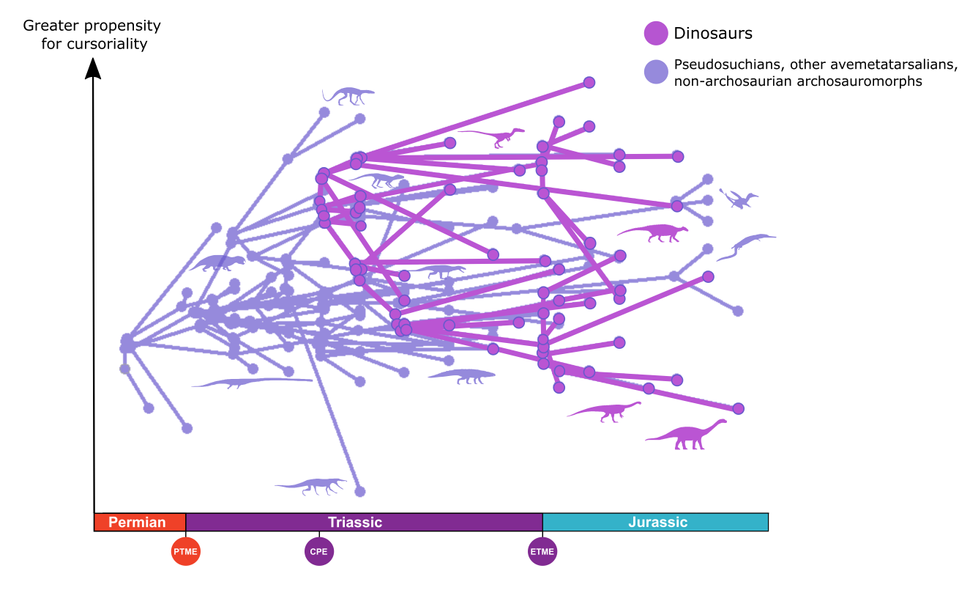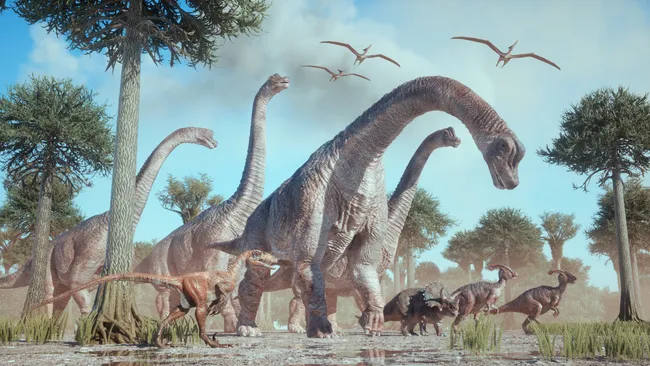Dinosaurs’ remarkable reign over Earth for more than 160 million years may be attributed to their distinctive walking adaptations, suggests a recent study. By evolving the ability to walk on both two and four legs, dinosaurs diversified and surpassed other organisms, establishing themselves as the dominant terrestrial vertebrates from the late Triassic period until their eventual extinction during the Cretaceous.
Published in the journal Royal Society Open Science on February 7, the study details how dinosaurs seized control of the planet by exploiting ecological niches that emerged following significant environmental upheavals. With their ability to walk on hind legs and later on all fours, dinosaurs gained a competitive edge amidst dramatic environmental shifts.
Dinosaurs belonged to the Avemetatarsalia group, evolving alongside a related reptilian group called the Pseudosuchia, which includes modern crocodiles’ ancestors. Both groups emerged during the Triassic period following the Permian mass extinction.

The researchers analyzed fossilized leg bones from 208 species of avemetatarsalians, pseudosuchians, and their relatives to track evolutionary changes. Initially, pseudosuchians were more diverse, with some walking on hind legs while others retained a crawling habit. In contrast, dinosaurs were bipedal from the outset, capable of running rather than merely crawling. This agility likely allowed dinosaurs to better evade predators and capture prey, especially during the drying climate of the Triassic.
As the Triassic period drew to a close, another mass extinction event decimated most pseudosuchians, leaving behind only crocodylomorphs. Meanwhile, dinosaurs adapted, with some maintaining an upright, bipedal stance while others transitioned to walking on all fours. This versatility enabled dinosaurs to exploit various ecological roles, leading to their remarkable success.
While dinosaurs developed additional traits contributing to their prosperity, such as temperature regulation through feathers and improved breathing mechanisms, the researchers assert that their diverse locomotion strategies were pivotal in their dominance over Earth for millions of years.
